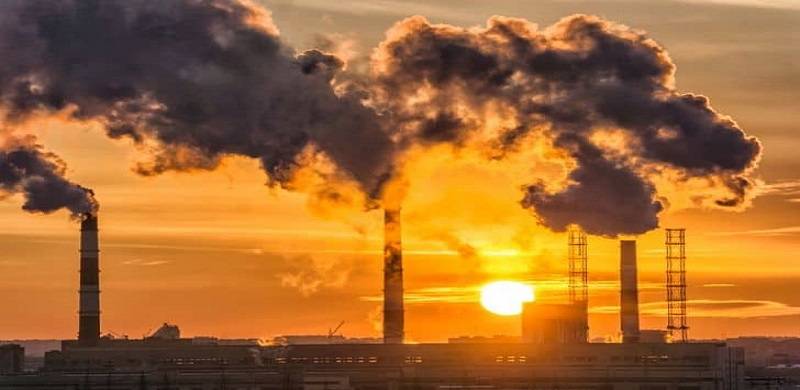
In 2018, the World Health Organization (WHO) issued an estimate that 9 out of 10 people are breathing toxic air in Southeast Asia, which is not meeting WHO quality air guidelines. Pollutants in the environment are causing faster climate change and we are experiencing extreme weather patterns globally. One of the major reasons of climate change is the phenomenon of carbon emissions caused by burning of fossil fuels – a process that produces harmful gases during commercial activities. The transportation and industrial sectors have the highest contribution when it comes to creating carbon emissions. Businesses burn fossil fuels on daily basis in transportation, electricity production, manufacturing of goods in factories and generating air pollutants particularly nitrogen dioxide, carbon dioxide and sulphur dioxide. The increase in energy demand has boosted fossil fuel consumption and the high proportion of sulphur dioxide and nitrogen dioxide in environment is making clouds that cause acid rain.
According to studies conducted on global warming, increasing temperature is melting the glaciers - with catastrophic consequences to follow. By 2050, one of the climate change threats will be the rise in sea levels up to 15 to 20 meters. Cities located by the coastline globally like Dhaka, Karachi, Mumbai, Beijing, New York and Singapore will be under water. There is an estimate of 400 million people displaced globally due to the disasters of climate change.
In 2019, Bill Gates started funding a carbon capture plant to stop the climate change, which is co-funded by fossil fuel companies Chevron, BHP and Occidental. This carbon engineering plant can suck the carbon equivalent to 40 million trees doing their job in the ecosystem. In the carbon capture technology and process, the plant captures Co2 before it is released in the air.
Carbon capture companies are storing Co2 in gas, solid and liquid form in storage reservoirs deep underground and below sea level. On the other hand, many scientific research studies confirm that the storage of Co2 under the ground or sea level could cause tremors under water. In addition to this, leakage of the carbon dioxide under the sea could contaminate the water and pose a huge danger to marine life. In 1986, there was a volcanic erruption in Cameroon in Lake Nyos killing 1,800 people. The volcanic eruption occurred due to carbon dioxide remaining trapped under water layers and something triggered the sudden release of gases. Scientists are not sure as to what had triggered the volcanic explosion of underwater gases. As per research, Lake Nyos, Lake Kivu and Lake Monoun (all in Africa) are known for volcanic eruptions. Governments are not seriously considering carbon capture plants as a solution because of the upfront cost and risk involved in building these plants. A carbon capture plant can remove Co2 from the atmosphere but this technology does not have the capability of generating oxygen for human beings or absorbing other toxic gases from the environment like nitrogen dioxide and sulphur dioxide, which are the major contributors for lung damage and cancer.
These carbon capture plants appear as a faulty solution or perhaps even a counte-productive measure to control air pollution. Perhaps Big Business wants to distract the people’s mind from current global warming issues by investing in temporary solutions.
In 2019, Pakistan has been ranked number 2 amongst the most polluted countries based on an Air Quality Index. To combat climate change in Pakistan, the government's major policy has been the planting of millions of trees. And generally, our discussions rotated around tree plantation and avoiding plastic waste. As I have discussed above, trees can only absorb carbon dioxide but air pollutants like nitrogen and sulphur dioxide cannot be absorbed by them. In fact these air pollutants are harmful for the plants and so one can say that trees are definitely not the solution for toxic So2 and No2 gases.
We did not take sufficient measures to reduce the consumption of fossil fuels to cover energy demand until now. According to the recent World Bank report, Pakistan will develop solar and wind power to 30% of total electricity capacity by 2030 to reduce its carbon footprint. In 2020, the Pakistani government has introduced an electric vehicle policy giving incentives to buyers and manufacturers in Pakistan.
The Pakistani government has taken the right measures with a lot of delay – but these steps will surely help reducing carbon emissions here.
